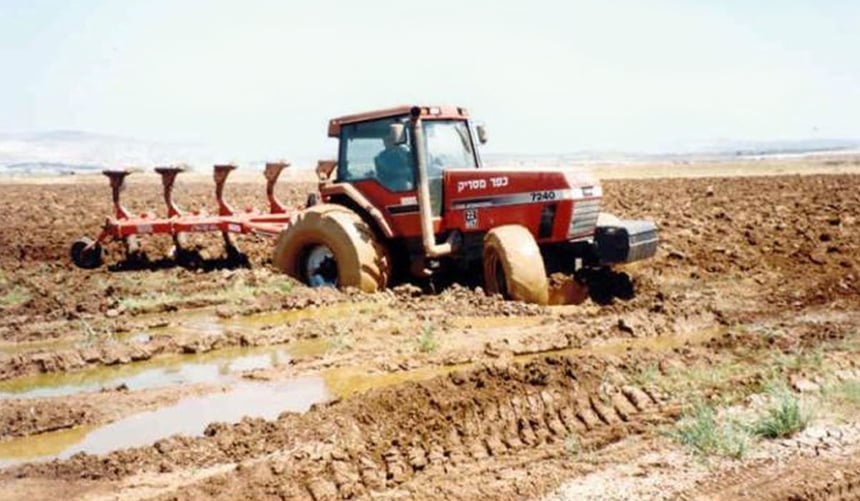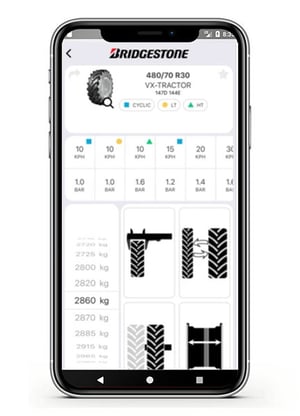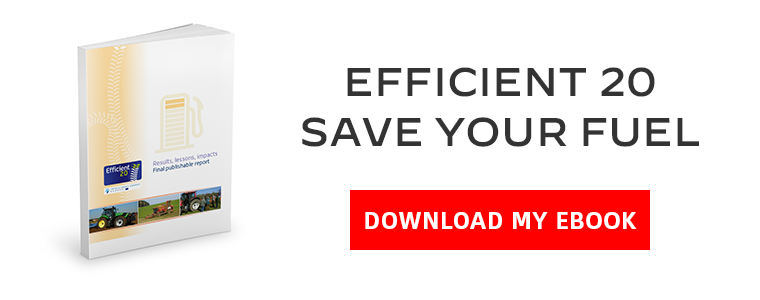Did you know that using a good tractor tyre can lead to considerable savings?
Up to €4,000 per year depending on the size and quality of the agricultural tyre used.
Why and how can there be such a difference between using a good tyre and a cheap tractor tyre or discount agricultural tyre? Under what heading do these savings come?
You can, of course, save on costs by opting for bottom-of-the range equipment, by choosing a low-cost agricultural tyre or old second-hand tyres that you patch up. Yet you might be surprised to discover that tyres which are more expensive to buy may prove to be more economic in the long run, especially when used intensively.
The key to savings of 4,000 euros per year lies in controlling your fuel consumption
Fuel represents 30% to 50% of energy consumption in farming. This is a large share of the farm’s budget. Due to this, in order to save on costs, it is essential to optimise the fuel consumption of your tractor and agricultural machinery.
How?
Your tractor’s fuel consumption depends on several factors: on the crop growing methods used, on your management of crop cycles but also on the choice of your equipment and especially the most suitable agricultural tyre.
To make fuel savings, it is not always easy to change your crop management model and limit the number of times your tractor has to cross the fields. It is far simpler to use better tractor tyres.
Change the original tyre mount to suit a better agricultural tyre
Your tractor’s original tyre mount is not the best, it’s simply the cheapest for the manufacturer. The size of the tyres must be adapted to the use of your tractor (sowing, ploughing, transport, etc.), its power and the type of soil.
A farmer in the UK (who took part in the Efficient 20 project*) reduced his fuel consumption by 30% by replacing his original tractor tyres with more suitable tyres (135 hp) for ploughing operations (5 furrow plough).
Beware of cheap or discount agricultural tyres
The tread pattern of your agricultural tyres contains a lug design. The angle of the lugs compared to the axis of the wheel affects your tractor’s pulling power. The shallower the angle, the greater the tractive force. But beware! Do not turn to low-cost models with an angle that is too shallow because this leads to cleaning problems. A badly cleaned tyre leads to loss of grip and increased slippage, which has a direct impact on fuel consumption.
Up to 20% extra fuel consumption linked to excessive slippage?
As slip ratio of more than 15% leads to horizontal sliding of the superficial layers of soil and damages the soil structure. In addition, the actual distance covered by the tyre, which is further than the distance driven by the tractor, leads to additional fuel consumption: 20% excess fuel consumption with a slip ratio of 30% to which premature wear of the tyres must be added.

Adjust tyre pressure to suit the use of the tractor
Not only does the right pressure in an agricultural tyre lead to better soil preservation and improve yields, it also allows you to reduce your energy consumption.
Depending on the type of work to be carried, the weight on the axel, the front or back load or the speed at which your tractor must travel, air pressure must be adjusted in order to be optimal. Overinflated tyres can put too much pressure on the ground, leading to excess soil compaction. The structure of an underinflated tyre will wear prematurely.
You must find the optimal tyre pressure which will allow the tyre to have the largest possible contact with the ground and as such improve the motricity of your tractor.
Optimised pressure can save 10% on fuel compared to maximum pressure, which is the pressure recommended for use on the road.
There are plenty of websites and apps developed by the major brands to help you calculate this optimal pressure.

Bridgestone has developed its own apps; Tyre Pressure Bridgestone and Firestone (available for Android and Iphone). They will help you to regulate inflation pressure. Choose your tyre from among more than 200 references, then indicate the load. You will automatically obtain the optimal tyre pressure to adopt.
Vous obtiendrez automatiquement la pression optimale pour effectuer vos réglages.
- Download the free FIRESTONE AG app for Androïd ou pour iPhone
- Download the free BRIDGESTONE app for Androïd or iPhone
A new VF agricultural tyre will make the difference
If you choose a low-pressure VF tyre, you will be able to work with a low tyre pressure, whatever the type of work you are doing, and you won’t have to make continuous tyre inflation adjustments. You will save a considerable amount of time. In addition, the reduction in fuel consumption means that after two years you will have reached the same point financially as if you had bought a cheap tractor tyre. Starting from the third year, the difference in fuel consumption is transformed directly into net margin, and that is without taking account of all the benefits of this VF technology.

Find out more
To find out how you too can save on fuel, download the free Efficient 20 report, based on the European project which took place between May 2010 and April 2013. Its aim was to create a network dedicated to fuel savings in the agricultural and forestry sectors, with the objective of achieving the European Union's target of 20% energy savings by 2020.
Pilot groups of farmers from 9 different countries have tested different fuel saving solutions using their agricultural machinery.
Download the results by clicking on the button below
The Bridgestone-agriculture.eu blog is written and administered by tractor tyre experts who are available to provide you with the advice you need on the subject of your agricultural tyres. They allow you to maximise your productivity with information on all subjects linked to agricultural tyres: technical data for agricultural tyres – solutions to avoid soil compaction – sprayer tyre pressure – why and how to ballast your tractor tyres – the 6 principal mechanical causes of abnormal wear to your tractor tyres – etc….
Most people who read this article have also read some of the following articles which are listed by order of popularity:
- Buying guide: 10 important tips for choosing the right farming tyres
- How to choose tyres for my farm trailer before the harvest?
- Standard farming tyre or forestry tractor tyre for deforestation?
- Which is better value? A cheap agricultural tyre or a VF tractor tyre
- How to make the right choice for your agricultural or tractor tyres?
This information is intended only to make you aware of the technical and functional aspects of agricultural tires and their use. It does not allow you to make a judgment or a definitive conclusion on a given problem. Only your agricultural tire expert is able to make a technical assessment and take a final decision, case by case.
Leave a
commentary
Your email address will not be published.
Required fields are indicated with *








